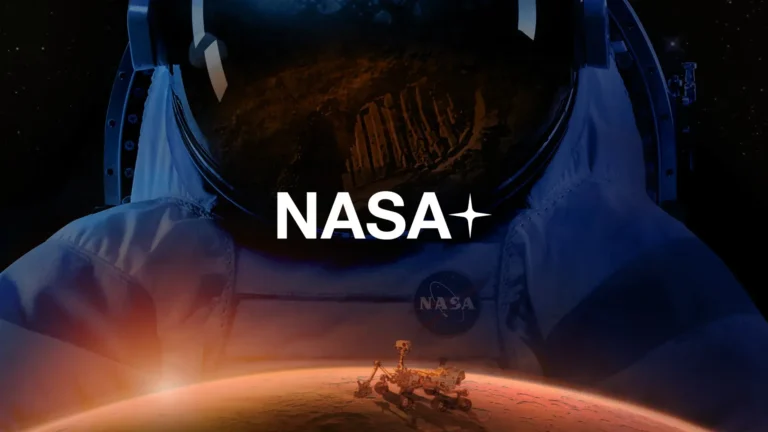

It turns out the only thing Nintendo needed to do to Donkey Kong to make me like him a lot more than I did previously is give him a plucky preteen sidekick with an emotional character arc.
Actually, that’s not entirely fair to Pauline, whom a Nintendo rep referred to as a “co-star” instead of a “sidekick” at an extensive Donkey Kong Bananza hands-on preview event I attended recently. The second big Nintendo Switch 2 exclusive, which launches on July 17, already showed a lot of promise when it was first announced thanks to its somewhat unique (for a 3D platformer) environmental destruction mechanics. However, after playing it for a couple of hours, the secret sauce that makes Bananza a game to watch out for is Pauline, a young girl with musical ambitions who teams up with DK on a journey to the core of the planet.
Put simply, Bananza is the most Pixar-like Nintendo game I can remember in a long time. Bananza‘s inclusion of a child comrade for Nintendo’s iconic ape makes it outwardly, endearingly adorable in a way I wasn’t expecting. Based on roughly two hours of pre-release gameplay, Donkey Kong Bananza is aiming for a distinct combination of chaotic rock-punching mayhem and earnest coming-of-age cuteness, and I think it might hit its mark.
More punching than jumping
Full disclosure: This was my second time getting hands on with Bananza, after a very brief 15-minute demo back in April that frankly didn’t do a great job of allowing me to sit and learn the game’s more esoteric qualities. After an extended demo in a more intimate setting, it’s clear that the team behind Super Mario Odyssey (which Nintendo confirmed as the lead developer at the event) is thinking outside the box with this game, which I dig. It just takes time to learn.
To be more specific, Bananza is a 3D platformer where “jump” isn’t your primary verb. DK can jump, yes, as well as climb many vertical surfaces throughout its big, vertically oriented levels, but the main thing you do in Bananza is punch the hell out of everything in your path. Most of the environmental geometry in any given level can be dynamically destroyed by DK’s fists, and this is core to everything about the way Bananza is designed.

Credit: Nintendo
To give you an idea of how weird this game can feel to control at first, there are four face buttons on a Switch 2 controller. In Bananza, one of them jumps, while the other three all do different kinds of punches that serve different purposes. It’s not as immediately pick-up-and-play intuitive as a Mario game might be, but after 20 minutes or so, you’ll be bouncing, climbing, and wrecking your way through levels with no problems.
Much like Odyssey, levels here are self-contained sandboxes that the player is free to explore at their leisure, with the general objective being to collect as many big, golden bananas as possible. Some bananas are waiting to be discovered underground or behind walls, while others are given as rewards for completing challenges. It’s similar to the way moons worked in Odyssey, though in my limited playtime, it seems like Bananza has jacked down the total quantity of bananas and made them generally more interesting to find than some of the really disposable moons in Odyssey were.

Credit: Nintendo
Another clever change from Odyssey is the addition of a skill tree, something I’d normally bristle at in a 3D platformer, but I think it works here. Skill points are gained from collecting bananas, which gives you an incentive to find as many as possible besides bare completionism. Upgrades include more health, stronger punches, and even additional moves like a double jump. I could see this becoming annoying over the course of a full game, but I liked it in the demo I played.
Anyway, once you figure out how everything works, Bananza does a great job of scratching the exploratory itch in your brain. It’s a hoot to bound around these levels as a big, wacky ape, discovering cool little environmental interactions (such as plucking seeds out of the ground and using them to grow platform vines) and creating your own pathways when a natural one doesn’t present itself to you. Don’t worry, though, if you prefer more sign-posted entryways to secret areas, as I frequently found myself taking a very inefficient path into some underground chamber before discovering an easily visible entrance I could’ve taken instead.
Exploring will often net you more than just random bananas, though. This game is full of little bespoke challenge rooms that range from combat challenges to platforming levels and even rooms where the objective is just to collect as much gold as possible. I found one that was a side-scrolling level in the vein of Donkey Kong Country, complete with a modern remix of the Bramble Blast music from DKC2. I noticed a lot of little nods to those games in my demo.
I just love Pauline, OK?

Credit: Nintendo
Now that I’ve gotten the boring video game parts of this video game out of the way, let’s talk about Pauline. She’s a young girl who DK meets in a chance encounter at the beginning of the game with a not-so-hidden talent for singing and a desire to get back to her world. She rides around on DK’s shoulders at all times and can use her singing powers to unlock challenge areas and even transform DK into various Bananza forms, which give him various power-ups like stronger punches and, in the case of his new ostrich form, the ability to glide around in the air.
In case you were (or weren’t) wondering, yes, this is the same Pauline who appeared as an adult mayor in Mario Odyssey. She was also the original damsel-in-distress in the old Donkey Kong arcade game before being sidelined in favor of Princess Peach for a long time. Nintendo is using this as an opportunity to reboot her and make her a devoted friend to DK rather than a kidnapping victim, which is for the best, I think.
One thing that helps give Bananza a lot more personality than it already has (and it has plenty) is that Pauline is fully voiced and frequently chimes in to comment on whatever’s going on. Most of her dialogue in the demo was delightful and surprisingly funny; you can rest on beds to recover health and she will often wake DK up in the middle of his naps to have goofy little chats with him.

Credit: Nintendo
I just think having a human co-star for the animalistic DK provides a nice balance and gives the player someone to relate to. It wouldn’t be out of place in a children’s animated movie. I think kids, and young girls in particular, will respond especially positively to her presence. I didn’t see a lot of this in my demo, but a recent Nintendo Direct livestream suggested that this game actually has some sweet and sincere storytelling about Pauline coming out of her shell as a songstress and finding herself, which I’m all about.
It doesn’t hurt that she’s incredibly expressive and well-animated, both of which are also true of her ape partner-in-crime. It’s worth your time to occasionally stop, spin the camera around, and check out DK’s and Pauline’s faces as they react to the world around them. And rather excitingly, you can play dress-up with the two of them, thanks to clothing stores in each level that sell fun little outfits that actually provide statistical bonuses as well as fresh-as-hell drip.
Funnily enough, I found myself growing a little emotionally attached to DK’s and Pauline’s relationship in my brief time with Bananza. It’s a clever inversion of the original “evil ape kidnaps woman” premise from the arcade game and will give plenty of younger players an avatar through which they can see themselves. Put another way, it’s all just very cute and I can’t wait to see more of it when the game launches in July.





